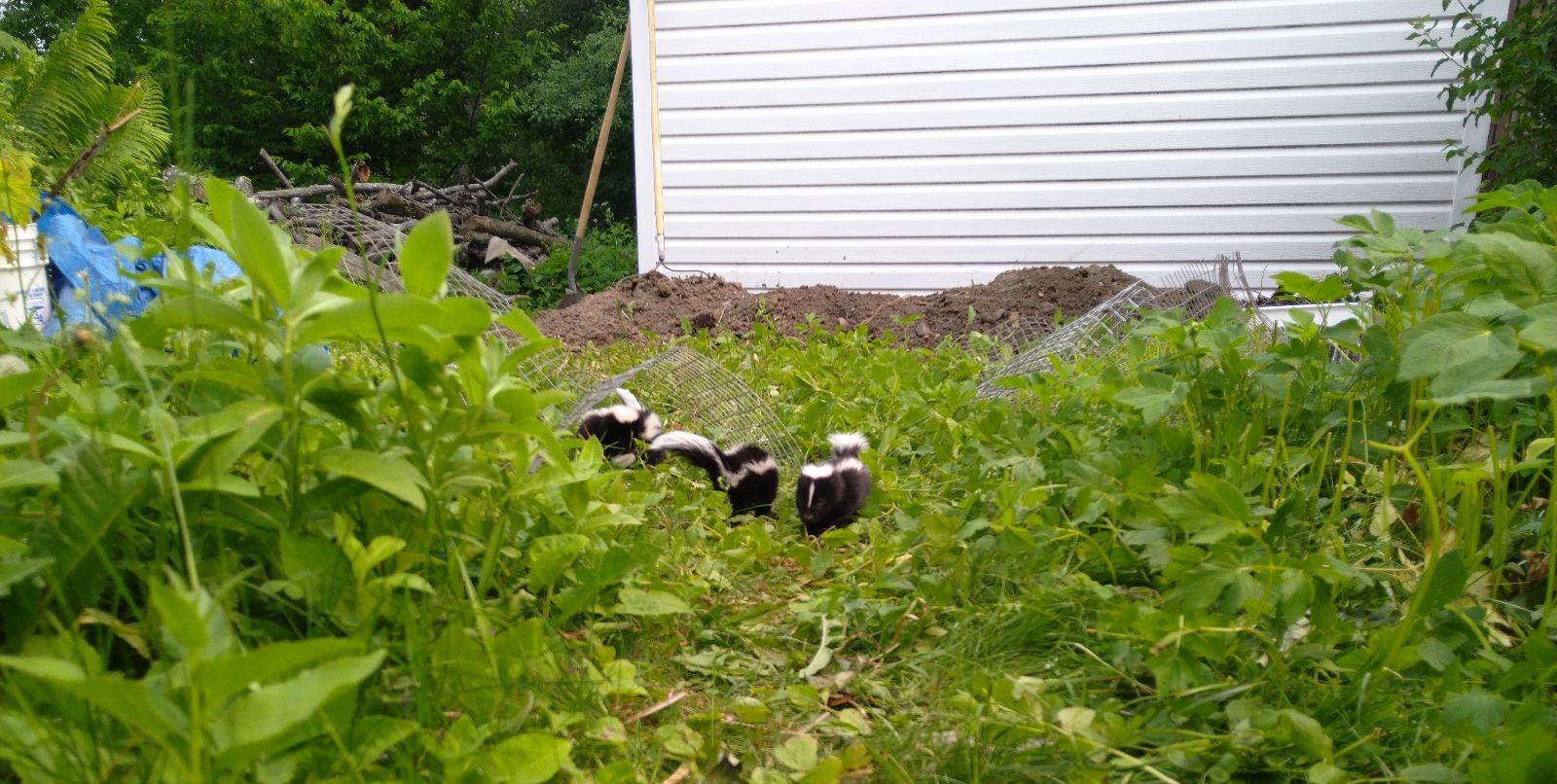That unmistakable smell hits you suddenly—pungent, acrid, and impossible to ignore. If you’ve ever experienced a skunk smell in your house or around your property, you know it’s not something you can simply overlook. While the misty spray of Niagara Falls might be a welcome sensory experience, a skunk’s signature scent most certainly is not.
At Skedaddle Humane Wildlife Control, we’ve assisted countless homeowners in Niagara in identifying, addressing, and preventing skunk issues. With over 30 years of experience, we understand that recognizing the early signs of skunks near your home can save you from weeks of dealing with a lingering odour that seems to penetrate everything.
Let’s explore how to identify when you have unwelcome striped visitors and what you can do about it before the telltale smell becomes a major household crisis.
Signs of Skunks Near Your Home: Beyond the Obvious Odour
While skunk smell is the most noticeable indicator, there are several other ways to identify their presence around your property. Recognizing these signs early can aid in quick action:
- Distinctive holes in your lawn: Skunks are skilled diggers, creating small, cone-shaped holes as they search for grubs. These typically measure 3-5 inches in diameter and can be scattered throughout your yard.
- Disturbed gardens: If your vegetable garden looks like someone has been digging around, skunks might be the culprits, foraging for roots and insects.
- Tracks and trails: Skunk tracks resemble those of cats, but feature more prominent claw marks, with five toes on both front and back feet.
- Garbage disturbances: Tipped-over garbage cans or scattered trash can signify skunks searching for food.
- Debris near potential dens: Piles of dirt, leaves, or other materials near structures like decks or sheds may hint at a skunk’s presence.
Keep in mind: Skunks are primarily nocturnal, but seeing one during the day does not automatically mean it’s sick or rabid. Mothers may forage during daylight to feed their kits.
How to Identify Skunk Presence Under Structures
Identifying where skunks reside on your property is crucial for effective removal. Skunks prefer creating dens underneath structures that offer shelter and safety:
Under Decks and Porches
- Look for entry holes: These are typically 4-6 inches in diameter along the perimeter of structures.
- Check for soil disturbance: Fresh piles of dirt near your deck’s edges indicate digging.
- Listen for noises: You might hear scratching or movement during dawn and dusk.
- Look for tracks: Skunk tracks in soft soil around structures can confirm their presence.
Under Sheds and Home Additions
- Foundation gaps: Look for spaces where skunks might squeeze through.
- Ventilation areas: Damaged vents can provide access.
- Visual confirmation: Using a flashlight to peek under structures can reveal dens.
- Hair or fur evidence: Skunks may leave black and white fur caught on rough edges.
Understanding the Skunk Smell in Your House
When that dreaded skunk smell invades your home, comprehending its source is key to finding the correct solution:
Direct Spraying
If the odour appears suddenly and intensely, your pet might have been sprayed directly, or a skunk might have released its spray near an open window or door.
Den Proximity
A more persistent yet less intense smell could signify a skunk has established a den nearby, emitting a musky odour that seeps into living spaces over time.
Secondary Transfer
The odour might originate from someone or something that encountered skunk spray elsewhere, bringing it into your home on clothing or fur.
Important fact: Skunk spray contains thiols, sulfur compounds that bond strongly to surfaces and resist normal cleaning methods, causing the smell to linger.
Understanding Skunk Activity throughout the Year
Grasping skunk seasonal patterns helps predict and prevent potential issues:
Spring (April-June)
Spring heralds the season for baby skunks:
- Female skunks give birth between May and June.
- They become more defensive and forage more actively.
- Human and pet encounters increase, making removal challenging.
Summer (July-August)
By mid-summer, skunk kits become mobile:
- Mothers lead them on foraging expeditions through neighbourhoods.
- Homeowners notice increased activity as kits dig for food.
- They seek shelter under structures to escape heat.
Fall (September-November)
In autumn, skunks prepare for winter by eating more and securing den sites under human structures.
Winter (December-March)
During colder months:
- Skunks enter periods of inactivity and rarely leave their dens.
- Removal is difficult due to frozen ground and limited activity, though females might use winter dens for spring births.
Preventing Future Skunk Problems
Instead of dealing with skunk odour post-incident, take these preventive measures:
Remove Attractants
- Secure garbage cans with tight-fitting lids.
- Feed pets indoors or promptly remove food.
- Clean up fallen fruits from trees and bushes.
- Use motion-sensor lights as skunks prefer darkness.
- Treat your lawn for grubs, a primary food source for skunks.
Secure Vulnerable Structures
Install barriers: The most effective long-term solution is installing heavy gauge steel mesh or hardware cloth around structures.
Remember, the best defence against skunk invasions is prevention. By taking proactive steps, you can deter these unwelcome visitors from setting up shop on your property. If you’re experiencing persistent skunk issues and need expert advice, Skedaddle Humane Wildlife Control is here to help. Our team of professionals offers safe and humane solutions tailored to your needs. Reach out today to protect your home and peace of mind.




